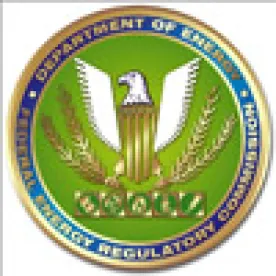On Thursday, June 29, 2017, the Federal Energy Regulatory Commission (“FERC” or the “Commission”) held a technical conference on the liquidity and transparency of natural gas price indices. The conference consisted of three discussion panels with panelists from various price reporting agencies (“PRAs”), trade associations, academia, energy companies, and other stakeholders.[1] There was general consensus among the panelists on a number of issues including general confidence in the indices, the importance of encouraging more price reporting, the need for a stronger safe harbor for price reporters, and the importance of maintaining a voluntary system.
Confidence in the Indices
The general consensus during the technical conference was that market participants have confidence in the indices. According to a number of panelists, this is borne out in the data showing more and more companies are relying on indices. Even where reported volumes and/or number of transactions are down, market participants indicated that transparent markets and abundant access to data allows them to regularly evaluate the reliability of indices and to make decisions based on their faith in index prices at particular locations. For example, trading on ICE and in derivatives can serve as a real-time data point for evaluating an index price, and comparisons between the prices reported by various index publishers also serves as a check. With respect to Platts and Natural Gas Intelligence use of ICE data in their analysis, the general attitude was the more quality data available to the PRAs the better.
Multiple panelists indicated that market liquidity is believed to have reached a floor and has been improving recently. They predicted increasing liquidity but still emphasized the need for more price reporting. There was discussion that some of the apparent drop in the depth of price reporting may be the result of more precise pricing locations dividing transactions across multiple points. Ultimately, panelists expressed confidence that the indexes are not broken, but that more should be done to encourage entities to report.
Encouraging Price Reporting
Multiple panelists discussed the cost-benefit analysis that goes into deciding whether or not to price report. Even those companies that currently report prices indicated that it is a close call as to whether the benefits outweigh the costs. To address this concern, panelists encouraged FERC to find ways to reduce the burdens, or perceived burdens, that lead market participants to not price report.
Removing Burdens and Barriers to Price Reporting
Panelists identified regulatory burdens and risks as the greatest cost to price reporters. According to numerous panelists, there are both real and perceived costs to price reporting imposed by FERC. For example, there is concern among market participants that price reporting will subject them to additional scrutiny from FERC, including long, burdensome audits and potential allegations of market manipulation in connection with their role in setting market prices.
-
Addressing Real and Perceived Audit Burdens – Panelists urged FERC to reduce the burdens of audits and to emphasize to market participants the successful outcome of audits. It was noted that no company has been penalized as a result of an audit of its price reporting practices, and that this point should be emphasized. Panelists also suggested ways to reduce the burden of audits, including FERC potentially deferring to the reporting companies’ own independent audits of their price reporting procedures rather than duplicating efforts with a FERC-conducted audit. It also was suggested that maybe FERC should focus its audits on non-reporting companies as another incentive to price report.
-
Strengthening the Safe Harbor – Panelists also urged FERC to consider ways to address the enforcement risks associated with price reporting. It was observed by one participant that the technical conference was filled with staff from FERC’s Office of Enforcement, and that FERC’s emphasis on enforcement has a chilling effect on companies’ willingness to price report. Multiple panelists noted market participants remember people going to jail at the turn of the century for price reporting missteps. Other panelists noted that risk was reduced by changes in how prices are reported pursuant to FERC’s policy statements, including moving reporting out of the front office and focusing on executed trades rather than basing indices on calls with reporters. Ultimately, the panels continuously returned to calls for strengthening FERC’s safe harbor for price reporters. Although panelists said exactly how to strengthen the safe harbor would require more thought and discussion, the view was that it needs to be expanded to give market participants more confidence that the regulatory cost of price reporting is minimal. One proposal included adding a behavioral element to the safe harbor to protect market participants from allegations of cross-market manipulation. Another suggestion was that the safe harbor should be codified so that it is not just a policy but a rule.
-
Encourage Reporting to Monthly Indices – Participants drew a distinction between daily and monthly indices, suggesting the greatest concern is with monthly indices. One suggestion for improving monthly index reporting was to clarify that reporting companies can choose to only report all daily trades or all monthly (or both) and are not required by FERC’s policy statements to report all trades. This, it was suggested, might encourage reporting by companies who transact at fixed-prices in bid-week but do not want to take on reporting responsibilities for daily reporting.
No Mandatory Price Reporting
There was nearly universal opposition to mandatory price reporting. Panelists, including companies currently price reporting and planning to price report, cautioned FERC staff about potential unintended consequences of mandatory price reporting. Instead, panelists praised FERC for having established policies that had withstood the test of time and been remarkably forward-thinking and allowed the markets to develop based on the needs of market participants. The consensus was to leave the market to work without government mandates and to instead work to remove regulatory burdens and risks that can hamper efforts to increase price reporting.
BP Energy was the only market participant to suggest some level of mandatory reporting. Expressing grave concerns about the enforcement risk BP Energy faces in light of its substantial market share of price-reported trades, Orlando Alvarez (President and CEO of BP Energy) pleaded with FERC staff to act quickly to increase price reporting. He suggested mandatory reporting for large marketers or for other subsets of the wholesale market.
Liquidity Thresholds – FERC staff inquired as to whether it should set liquidity thresholds for price indices as it has done for pipelines that reference indices in their tariffs. Without resolving potential legal limitations on FERC’s ability to set such limits, FERC staff asked whether FERC should consider implementing standards similar to those adopted in Europe for price index publishers. The answer was a resounding “NO.”
Panelists praised FERC for requiring disclosure of the volumes and number of transactions and explained that this information allows market participants to make their own choices about reliance on indices. Multiple panelists noted that even the fact that a pricing location is illiquid can itself be useful information. The consensus again was to let the market work without FERC establishing arbitrary limitations.
All-or-Nothing Reporting – The panels discussed the value in market participants reporting to as many PRAs as possible, and FERC was urged to encourage reporting to multiple PRAs. However, here again, there was a reluctance to mandate that any company that reports to one must report to all. Although this could increase transparency and competition among PRAs, there was fear that it might cause reporting companies to reconsider reporting to any PRAs. Instead, multiple panelists suggested FERC restate its policy that reporting companies are not required to report to all PRAs and remove language suggesting doing so is onerous or overly burdensome. Multiple panelists insisted that reporting to multiple PRAs is not cumbersome and essentially just means adding additional PRAs to the distribution list of their reports.
Competition Among PRAs
At times the technical conference turned to the tension between the public desire for access to data and the efforts by PRAs to protect their intellectual property. Panelists stressed the need for competition among PRAs to avoid monopoly pricing and to ensure the survival of multiple index publishers as a general check on prices and to serve the varying needs of consumers. Despite early concerns about its potential impact on market power, there appeared to be consensus that Platts buying access to ICE data is a good thing for price transparency.
One issue raised was whether PRAs should engage in assessments or whether they should refrain from printing a price on any day when the reported trades are insufficient to establish a price. Market participants were divided on this question, and PRAs indicated differing approaches, but anecdotal evidence from PRAs, and ICE, suggested market participants tended to support assessments.
The Elephant Not in the Room
It was clear from discussions that there are a number of market conditions that are driving how parties transact, and it also was clear that enforcement risk can have a negative impact on whether parties report prices. Government activities affecting both of these issues go beyond FERC’s authority and often are directly related to actions by the Commodity Futures Trading Commission (“CFTC”). For example, several panelists attributed changes in the way parties transact not only to the low-price environment but also to banks and other financial entities exiting the market, in part, as a result of increased regulation or restrictions pursuant to the Dodd-Frank Wall Street Reform and Consumer Protection Act. Panelists noted that the lack of liquidity in the forward curve can lead to less hedging and less fixed-price monthly trades. Although not discussed during the conference, CFTC enforcement also can have a similar chilling impact on companies’ willingness to price report. Although FERC alone can look to strengthen its safe harbor protections, it will be important to remember that the CFTC will be a player in this area.
Conclusions
There is general confidence in the indices. There is nearly unanimous opposition to mandatory price reporting (BP Energy being the exception). There is unanimous agreement that reporting is important and should be encouraged by FERC. How FERC can encourage reporting is a question for further consideration, but, as a start, FERC should look for ways to provide confidence to market participants that reporting will not increase regulatory risk.
Written Comments
FERC has invited written comments on the technical conference (due by July 31, 2017).





 />i
/>i

